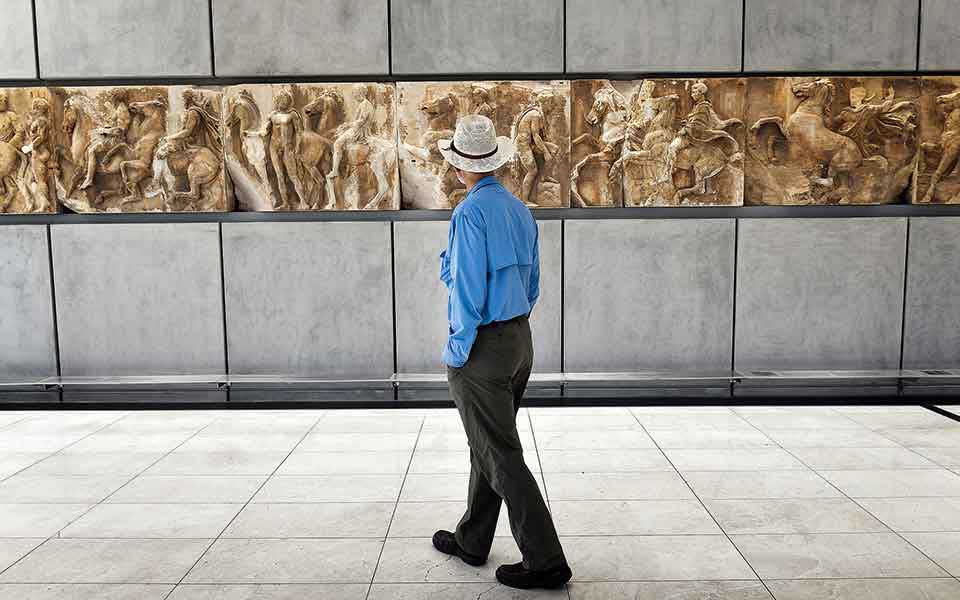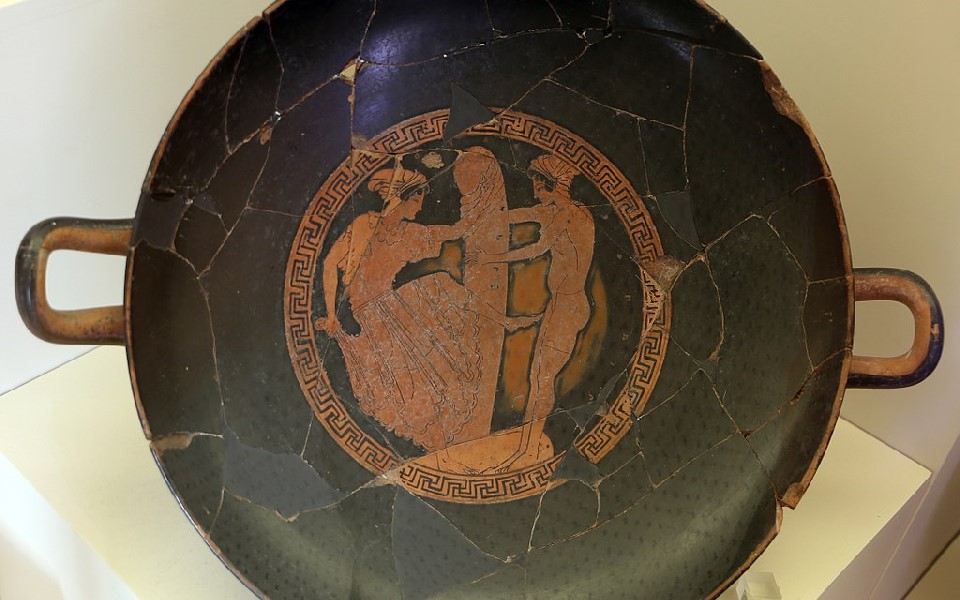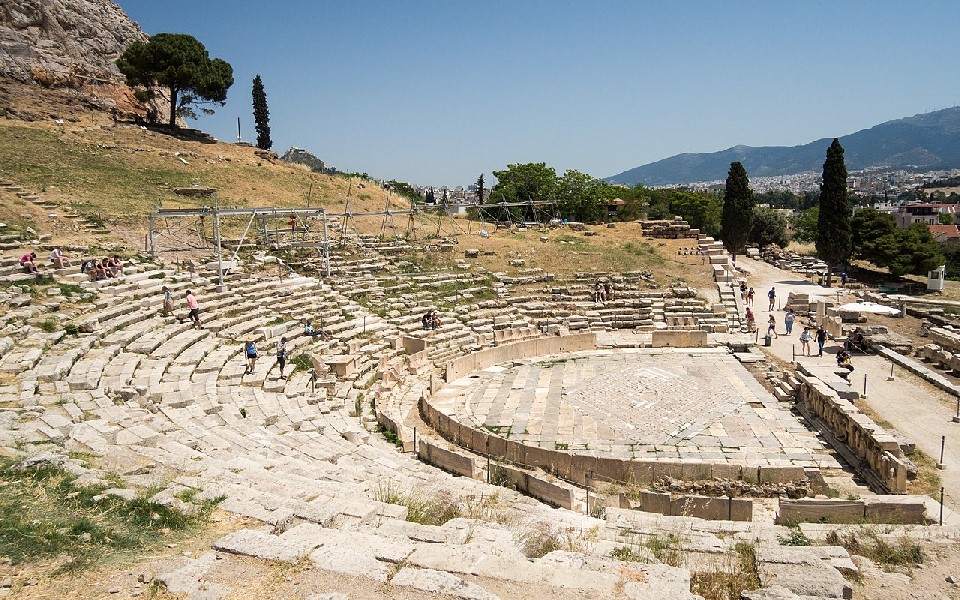The Secret Life of the Odeon of Herodes...
A monument of memory and music,...

Devotees of Dionysus: "The Women of Amphissa" by Lawrence Alma-Tadema (1887).
© Public domain
The ancient Greeks were a deeply religious and superstitious lot. Polytheistic in nature, they worshipped a pantheon of gods and goddesses residing on Mount Olympus (aka the “Olympians”), each associated with different domains of life. If you were an expectant mother, for example, you would pray to Hera, goddess of marriage, women, and family, for protection. If, on the other hand, you were preparing to go to sea, you would invoke her mercurial brother, the sea god Poseidon.
In ancient Greek religion, rituals, festivals, and sacrifices were central to expressing devotion and strengthening the bond between the divine and mortal realms. Festivals were also crucial for fostering a sense of community and shared cultural identity, bringing people together and reinforcing their connections as members of a particular tribe, city-state (“polis”), or region.
Perhaps the most famous festival to cement civic pride in ancient Greece was the Panathenaia, held annually in Athens in honor of the patron goddess Athena. This multi-day, midsummer festival, depicted in sculptural relief in the Parthenon frieze, brought together Athenians from all walks of life, actively reinforcing the democratic principles of the city.

Ancient Greek festivals like the Panathenaic Procession, as depicted on the Parthenon frieze, fostered civic pride and helped to reinforce strong communal bonds.
© Shutterstock
As the Christmas season is now in full swing, with homes and high streets up and down the country twinkle with bright festive lights and the sweet aroma of freshly baked melamakarona and kourabiedes (Greek Christmas cookies) fills the air, we thought it would be fun to travel back in time to explore some of the principal ancient Greek festivals that took place at this time of year.
We know from contemporary sources that the Greeks celebrated some of their biggest and most important festivals around the time of the mid-winter solstice, December 21, integrating religious rituals, theatrical performances, and communal feasting. For the ancient Athenians, who used their own lunar calendar (the Attica Calendar), these festivals took place in the months of Poseideōn (December/January) and Gamēliōn (January/February). It was also a time when cheeky and mischievous goblins (“kallikantzaroi”) would emerge from their underground burrows and play tricks on people.

Courtesans ("hetairai") dancing around a giant phallus at a Haloa festival (Oedipus Painter, 480 BC).
© Public domain
Dedicated to Demeter, the goddess of agriculture and fertility, and her daughter Persephone, the festival of Haloa was primarily celebrated at Eleusis in Attica during the month of Poseideōn. It held great significance in the agricultural calendar as it marked the end of the sowing season and the beginning of winter.
The central theme of the Haloa was fertility and the cycle of life. It celebrated the earth’s fertility and the promise of a bountiful harvest to come. The festival’s name, derived from the Greek word “halos,” meaning threshing floor, clearly reflected its agricultural connections, but, interestingly, men were almost always excluded from partaking in the Haloa. Furthermore, as head of the household, men had a legal and moral obligation to pay for their wives’ expenses to attend the festivities.
Another unique and notable aspect of the Haloa was its explicit connection to sexuality and fertility. The festival included a mysterious and explicit ritual, during which women engaged in sexual banter, raucous jokes, and displayed phallic symbols. This open expression of sexuality was believed to invoke Demeter’s fertility and ensure the fertility of the land. The festival also included a feast, where participants shared food and wine, fostering a sense of communal celebration. The feast included little or no meat. Instead, cereal and vegetable-based dishes were served, followed by phallic- and vulva-shaped cakes.

A Classical bronze statue of Poseidon/Zeus (c. 460 BC), on display at the National Archaeological Museum of Athens.
© Public domain
The festival dedicated to Poseidon, god of the sea, earthquakes, and horses, was known as the Poseidonia. Celebrated primarily in coastal regions, where Poseidon’s influence was most pronounced, this festival was especially popular on the Saronic island of Aegina, one of Athens’ main rivals in the 6th and early 5th centuries BC. It took place sometime around the mid-winter solstice, the shortest day of the year.
The Poseidonia was a multifaceted celebration that served to honor and appease Poseidon, seeking his favor for safe maritime activities and protection from the unpredictable forces of the sea. The festival was particularly crucial for seafaring communities heavily dependent on fishing, trade, and naval endeavors.
Not much is known about the specific celebrations but scholars have speculated that they may have involved a combination of religious rituals, processions, and even athletic competitions. A passage in Homer’s “Odyssey” (Book III) describes a large gathering on the shore of Pylos, where attendees are described “sacrificing sleek-black bulls to Poseidon, god of the sea-blue mane who shakes the earth.” After the sacrifice, they “tasted the innards [and] burned the thighbones for the god,” and consumed vast amounts of wine.
It is interesting to note that most Christians around the world today celebrate Christmas on December 25th, four days after the mid-winter solstice. Seeing as the Hellenic world of the eastern Mediterranean was an early center for the spread of Christianity, it’s tempting to speculate how pagan festivals such as the Poseidonia, with its feasting and revelry, paved the way for the Christian tradition of feasting at Christmas. After all, the sea god Poseidon was also venerated as a “savior” of sorts, protecting sailors, fishermen, and those engaged in maritime activities, the lifeblood of the ancient Greek economy.

"The Triumph of Bacchus," by Diego Velázquez (1628-1629)
© Public domain
Also held in the month of Poseideōn, straddling the mid-winter solstice, was the Rural Dionysia, dedicated to Dionysus, the god of wine, ecstasy, and theater. Unlike its urban counterpart, the City Dionysia, which took place in Athens in the month of Elaphēboliōn (March-April), the Rural Dionysia was celebrated in the countryside, emphasizing the agricultural aspects of the god, his association with vineyards, and highlighting the connection between fertility and the land.
Central to the Rural Dionysia were processions, often featuring local farmers, winegrowers, and other rural inhabitants. Participants carried representations of Dionysus, such as statues or large phalluses, as they moved through the countryside, visiting vineyards and key agricultural sites. Young maidens and other festival goers carried baskets of bread, grapes, and other produce, as well as large jars of wine. These processions were likely accompanied by chants, hymns, and ritualistic dances, invoking the blessings of Dionysus for a successful growing season.
While the Rural Dionysia did not include the elaborate theatrical performances of the City Dionysia, it likely featured local entertainment, music, and rustic performances that reflected its rural character. The festival is famously parodied in the play “The Archarnians,” by Athenian comic playwright Aristophanes (c. 446-c. 386 BC), the oldest surviving example of the highly satirical genre of Old Comedy.
Just like the Poseidonia festival, it’s tempting to make a link between the veneration of the pagan god Dionysus, who, according to the myth, was torn apart by Titans as a child and resurrected by Zeus, and the story of the Passion and Resurrection of Jesus Christ. Other examples of the “dying-and-rising god” motif in ancient religion include the green-skinned Egyptian god of fertility and agriculture, Osiris, and the Sumerian god Tammuz, also associated with agriculture.

The Theater of Dionysus, on the south slope of the Athenian Acropolis.
© Public domain
Another ancient Greek festival in honor of Dionysus was the Lenaia. This festival had a significant theatrical character, showcasing the Greeks’ deep connection between the divine and artistic expression. The Lenaia typically took place in Athens in the month of Gamēliōn (January-February), but there is evidence that the festival also took place in at the sacred sanctuary of Delphi, in central Greece, as well as in the Greek city-states of Ionia, on the west coast of Asia Minor.
The festival involved dramatic competitions, where playwrights presented tragedies, comedies, and satyr plays to compete for recognition and honor. These performances provided a platform for artistic expression and cultural exploration, allowing playwrights such as Aristophanes to showcase their talent. Incidentally, it is recorded that Aristophanes’ “The Archarnians” won first prize at the Lenaia festival in 425 BC.
The name of the festival, Lenaia, likely comes from the Greek word “lenos” meaning “winepress.” Active participation would have extended beyond the performers to include the wider community. Citizens, both men and women, attended the theatrical performances, engaging in the collective experience of storytelling and artistic expression.
Just like our own Christmas festivities, the Lenaia brought the community together in a shared celebration of culture, feasting, and divine worship.
A monument of memory and music,...
In 30 BC, Octavian, the future...
Mischievous Greek goblins, the Kallikantzaroi emerge...
Whether drizzled on lentils, stirred into...